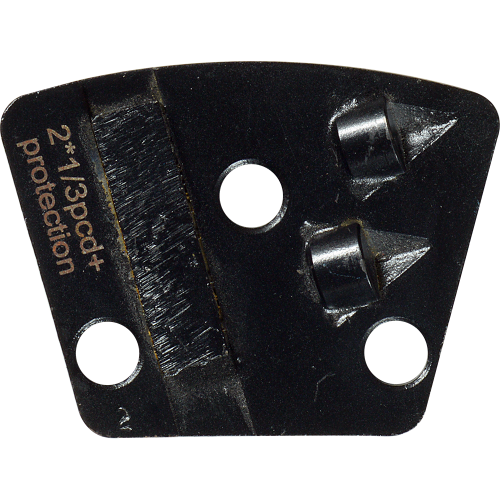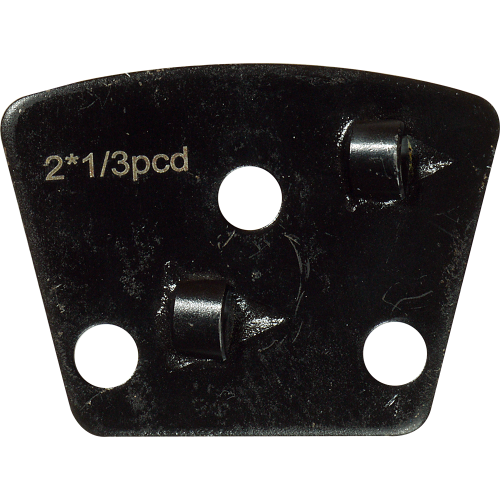
Coating Removal Tooling

Series 37 – PCD with Bar
Description
The 37 Series PCD with Bar Tooling has two offset 3/8″ wide PCD diamonds with an angled 30 grit Hard Bond Metal Bar. The Polycrystalline diamonds (PCD) are very heat and fracture resistant, making them a create coating removal tool.
Uses
The 37 Series PCD with Bar Tooling is designed with the 30 grit bar to prevent the deeper scratching and gouging while still aggressively removing the coatings. It is generally the PCD of choice during prep for a final polished floor or stained and sealed floor.
Application
The 37 Series PCD with Bar Tooling is the fastest way to remove coating over 2 mils in thickness without harsh chemicals or mess shot blasting. Both PCD’s (Double and Single Bar) stand up well to high heat and are fracture resistant.
Thickness
3/16″ to 1/4″
Size Available
3″ x 2″ Trapezoid
Coverage Rates
5,000 – 10,000 square feet
** Coverage can vary from surface to surface depending on roughness, porosity and density. The floor environment under coated surface can vary tremendously.

Series 37 – Double PCD
Description
The 37 Series Double PCD tooling has two offset 7/16″ wide PCD diamonds. The Polycrystalline diamonds (PCD) are very heat and fracture resistant, making them a create coating removal tool.
Uses
The 37 Series Double PCD Tooling is designed for coating removals when heavy scratching or gouging will not be an issue such as prep for epoxy or cementitious overlays.
Application
The 37 Series Double PCD Tooling is the fastest way to remove coating over 2 mils in thickness without harsh chemicals or mess shot blasting. Both PCD’s (Double and Single Bar) stand up well to high heat and are fracture resistant.
Thickness
3/16″ to 1/4″
Size Available
3″ x 2″ Trapezoid
Coverage Rates
5,000 – 10,000 square feet
